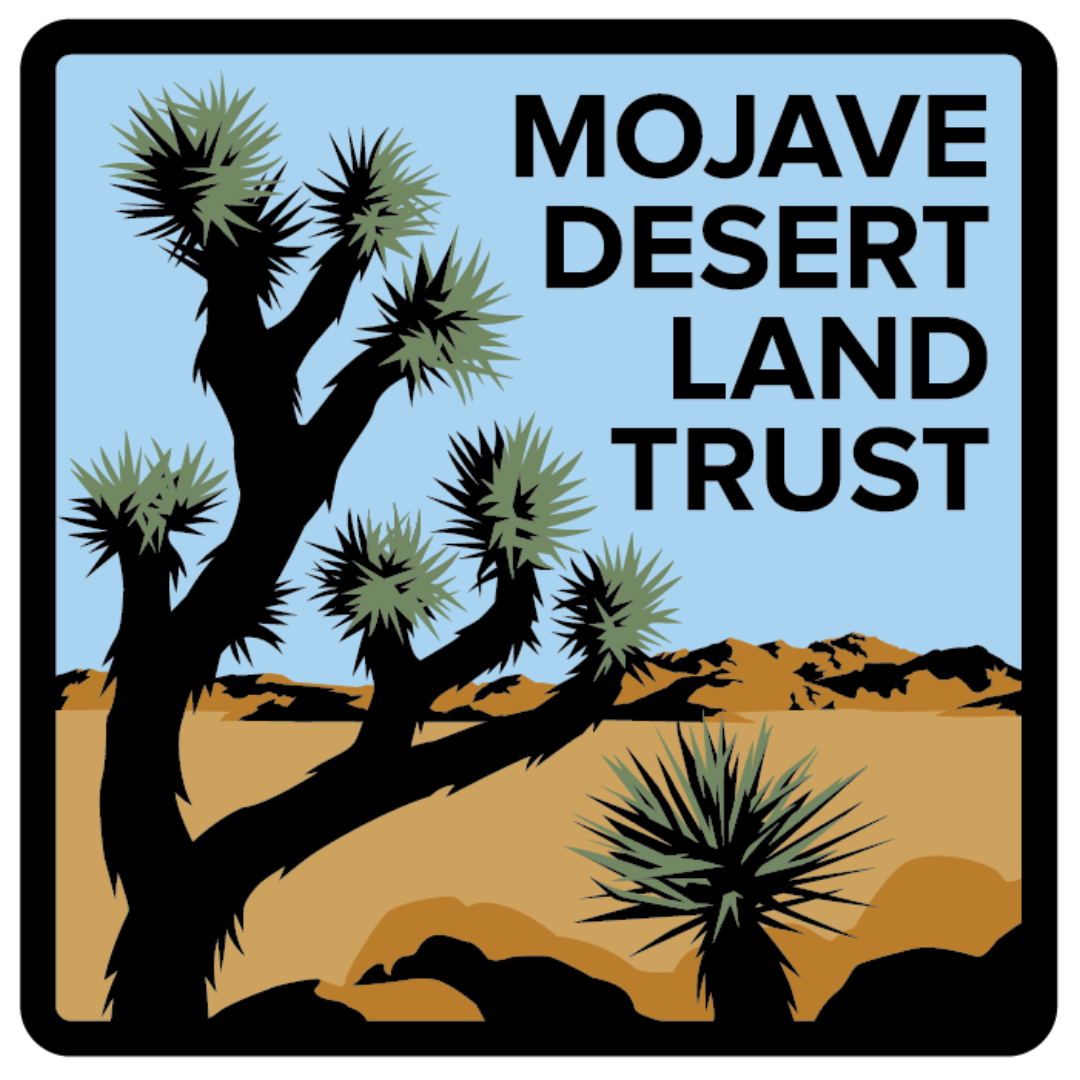Scenic viewpoint protected in Mojave Trails National Monument
Mojave Trails National Monument, CA–The panoramic viewshed at the entrance to Mojave Trails National Monument has been protected for conservation with the Mojave Desert Land Trust’s acquisition of two parcels totaling 1,280 acres.
The property has awe-inspiring, 360-degree views of the heart of the monument. Starting in the low-lying Willow Springs Wash, it sweeps up to a 2,485 feet-high point in the Sheephole Mountains. Below, creosote bush dot the sandy landscape, which looks out towards the Bristol Lake salt flats, the ancient Amboy Crater, and the national monument’s different mountain ranges. The parcels were acquired from a mining company.
Preserving this landscape will help address ongoing issues of boulder graffiti tagging, trash dumping, and habitat degradation.
A portion of Amboy Road and several unauthorized routes cross the property. Its proximity to one of the few travel routes through the national monument has resulted in a significant amount of dumping such as mattresses, tires, building materials, and hazardous materials. An illegal camp location included a makeshift toilet and bench. Fire rings are present and graffiti covers prominent rock formations.
In the year ahead, the Mojave Desert Land Trust aims to clear away trash and support the restoration of habitat for species such as the Endangered Mojave desert tortoise, creosote scrub, and big galleta grass. To aid the Land Trust’s stewardship efforts, supporters can make a donation and sign up to join the volunteer corps.
“This acquisition is particularly special because it can be easily experienced by all who visit the monument, simply by enjoying the scenery while touring along the beautiful highway and historic Route 66,” said Cody Hanford, Director of Conservation Strategy. “We mainly acquired these parcels to preserve the habitat and important species like desert tortoises that rely on intact ecosystems to survive, but it is also very rewarding to preserve these open space vistas that our desert community and its worldwide visitors can also appreciate while they travel in California. It will be very rewarding to help clean up negative impacts and restore more of the habitat.”
Mojave Trails is the second largest national monument in the country and is renowned for its dark night skies, rich biodiversity, varied geology, and vast sense of space. Within the 1.6 million acres, visitors can see pristine sand dune systems, lava flows, rare springs, and deep canyons. This “invaluable treasure” was federally protected by President Obama in 2016 and is managed by the Bureau of Land Management. The monument contains cultural landscapes, sacred areas, and traditional territories for Native American tribes, and a variety of programs connect Tribal members to the living history, traditional practices, and languages that are an inextricable part of these lands. The monument was also shaped by travel with historic American trading routes, a transcontinental rail line, and the longest remaining undeveloped stretch of Route 66. It retains some of the best-preserved sites from the World War II-era Desert Training Center. Its location neatly connects Mojave National Preserve with Joshua Tree National Park, ensuring biological and landscape-scale connectivity for wildlife and ample recreation for visitors.
To date, the Mojave Desert Land Trust has protected 12,092 acres within Mojave Trails National Monument, of which 5,585 acres of privately-owned land has been transferred back to the Bureau of Land Management under restricted conservation agreements.
Across the California desert, the Trust has protected approximately 130,000 acres within national parks, wilderness, national monuments, areas of critical environmental concern, and habitat linkages. A total of 30,585 acres has been transferred to the Bureau of Land Management. Through land acquisition and restoration, the Trust is supporting long-term health of the desert ecosystem and the communities that depend on it for survival.
Aerial view of the property
Dumping of items such as tires are among the issues at the site.


